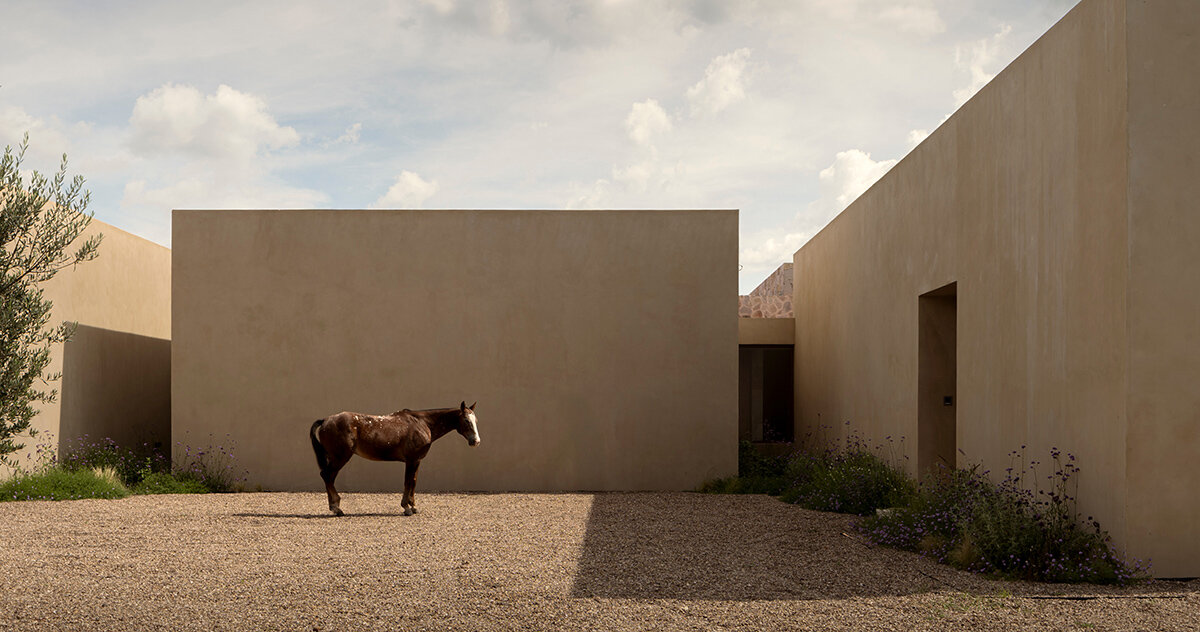a holiday home on a vineyard
Casa San Francisco by Jorge Garibay Architects stands in a vineyard on the outskirts of San Miguel de Allende, in Mexican Guanajuato state. Designed as a vacation homeThe project draws its character from the world of winemaking and the slow changes that take place over time.
The design reflects the origins of San Miguel – founded in the 16th century when Franciscan monks introduced wine growing to Mexico – and honors the way imported traditions were adapted to a new environment.
Architecture and viticulture, both brought across the Atlantic, developed differently once exposed to the local soil, light and climate. Casa San Francisco continues this dialogue by translating the contemplative spatial planning of monastic architecture into a contemporary domestic environment.
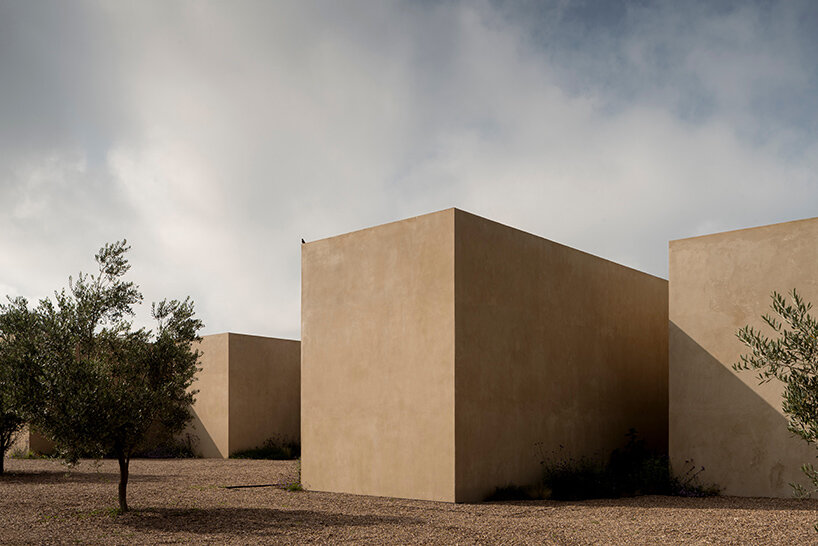
Images © César Belio
Jorge Garibay's architecture in five volumes
The team at Jorge Garibay Architects, his Casa San Francisco is organized around a central corridor that runs laterally through five different volumes. Each volume opens onto a landscaped area, allowing uninterrupted views of the surrounding vineyards and hills. Entry is through a double-height vestibule that filters the transition from outdoor to indoor, emphasizing the transition from the openness of the landscape to the intimacy of the house.
The west side houses the common areas – living room, dining room, kitchen, terrace, garage and service areas – while the east wing is reserved for four bedrooms. This clear separation of uses gives the plan a measured rhythm and reflects the linear geometry of the rows of vineyards. Movement through the corridor reveals a series of framed perspectives, each attuned to the changing daylight and seasonal growth beyond.
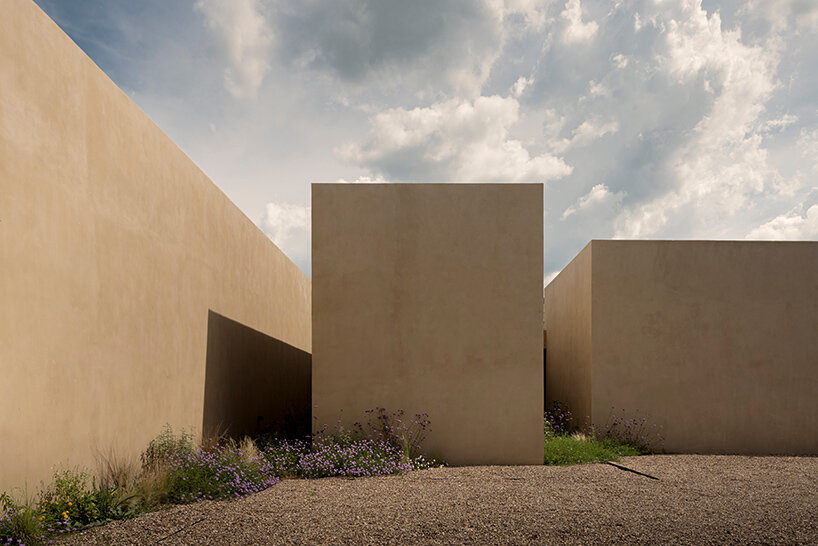
Casa San Francisco is surrounded by vineyards near San Miguel de Allende
in the monochromatic Casa San Francisco
Jorge Garibay considered materiality as a means to express the passage of time and the endurance of local crafts. The construction uses stone from a nearby quarry, unpolished Mexican marble underfoot, and hand-applied lime paint to create subtle tonal variations. Together, these materials form monochromatic surfaces that anchor the building in its terrain and emphasize the play of light across structured surfaces.
The simplicity of the palette underlines a disciplined restraint. Oak furniture complements the tactile honesty of the architecture and the lighting design references the soft glow found in 16th century monasteries. Rather than reproducing historical effects, the lighting recreates the warmth and tranquility of these spaces in a modern setting.
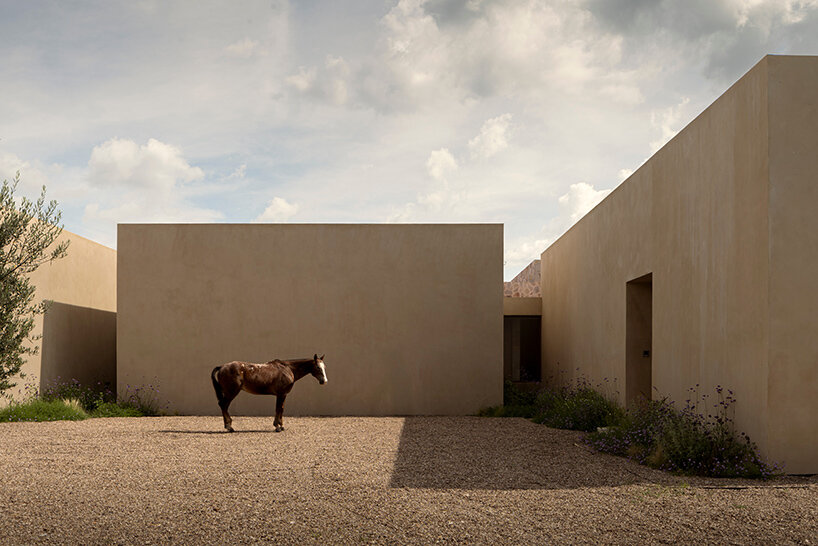
Jorge Garibay Architects designed the house as a meditation on time
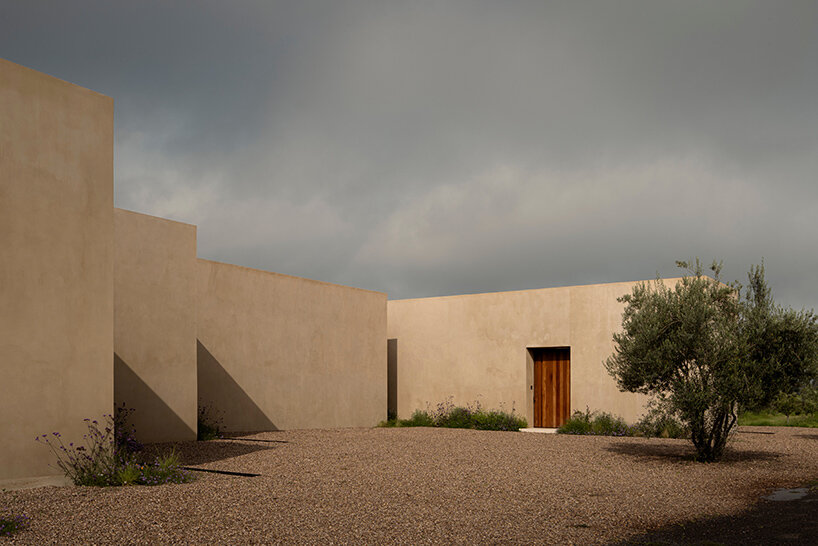
The project combines architecture with the slow rhythm of winemaking
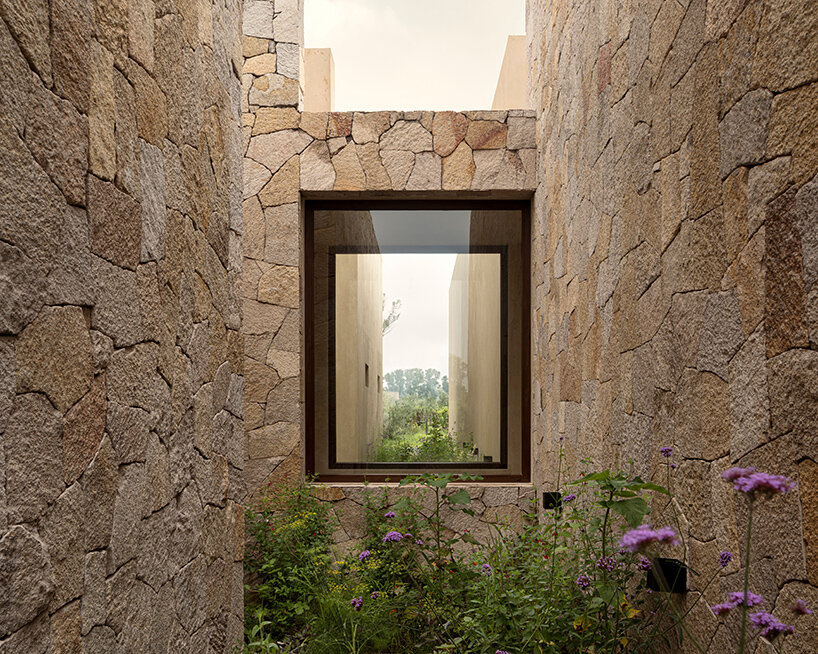
Five stone bodies are connected to each other by a corridor adapted to the landscape
